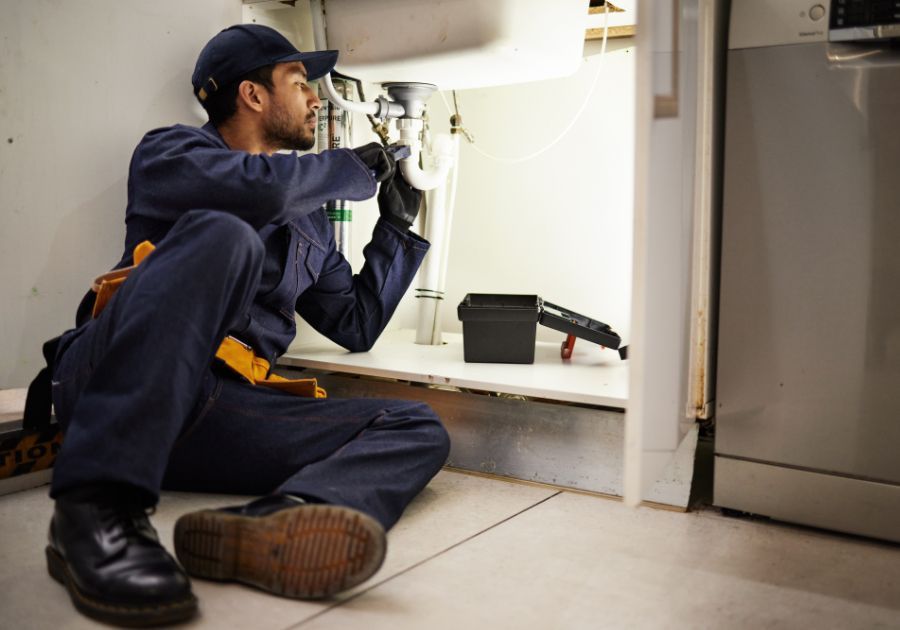4 Must Do Items After a Tenant Vacates Your Property

Vacancies are a part investment property, and even long term tenants will eventually move out. There are a number of steps you consider after a tenant moves out.
While not every case is the same, today we’ll go over four different must do tasks you should take into account after a tenant vacates your rental property.
Inspect the Property
Although we all want to assume that your tenants were careful and respectful of your property, it's important to understand that sometimes damages happen without anyone noticing. For example a minor crack in the shower may not seem important enough for your tenant to bring it to your attention. However this small crack, if left unchecked for long periods of time can ultimately leak into the walls causing rot and mold.
Landlords or
property managers
should perform a detailed walkthrough of the rental property to look for anything not considered normal wear and tear. Look for deliberate issues such as holes in walls, broken appliances, or carpet stains. These items may require repairs or replacements.
Take photos or videos in order to document the condition of the property. This can help provide evidence for any security deposit deductions. This also provides a record of the condition of the property after the tenant moves out.
Clean and Prepare
Once the tenant is moved out, now comes the time to deep clean the property. This way you can better see minor defects that may require attention. This may include cleaning carpets, scrubbing floors, and wiping down walls. Areas such as baseboards, windowsills, and air vents oftentimes get overlooked which can lead to expensive repairs if ignored.
If you allow tenants to own pets, or they were smokers, this can leave behind an unpleasant odor. This may require professional odor-removal treatments to ensure the property smells fresh for the next tenant. If the rest of the property is in good shape, all that's left is to give the rental a fresh coat of paint and replace any items that may be getting worn out.
Repairs and Maintenance
Unfortunately not every vacancy is as simple as a cleaning and paint job. You may need to invest additional time and money repairing damages that were noted during the initial inspection. This can include repairing drywall, replacing broken fixtures, and any other major repairs. This helps to ensure the property remains in good condition for longer while being appealing to potential renters.
Having no tenant living in the rental provides a great opportunity to take care of other routine maintenance tasks. Such as changing air filters, checking smoke detectors, and servicing the HVAC system. If your rental is an older property or has outdated features, consider making minor
property upgrades to it. This can increase the appeal of your rental. Consider replacing appliances with newer, more efficient ones or updating fixtures. This investment can help to justify a higher asking rent and potentially attract higher quality tenants.
Market the Property for New Tenants
Once you’re satisfied with the property’s condition, take high-quality photos that showcase its best features. Alternatively, if you’ve already had professional photos taken, if not much has changed, feel free to re-use them. High-quality photos are essential for attracting prospective tenants and are necessary for listing your rental online. However in the current market, this isn't enough and you may want to consider setting up a 3d tour, drone photos, and videos in order to give a prospective tenant all the angles of the rental.
Finally remember that the rental market is constantly changing. You’ll need to research the local rental market in order to determine a competitive rental rate. Regularly performing
rental assessments helps keep prices from being too high, which can lead to extended vacancy periods. While pricing it too low may inadvertently attract less responsible tenants or leave money on the table.
When a tenant moves out, it may feel like a hit to your monthly income, though you should see it as an opportunity to reassess and potentially earn more down the line. If you need help preparing for a vacancy for a new tenant or managing Beach City rental property, we invite you to call us today at (562) 888-0247 or complete our
Owner Application online.





